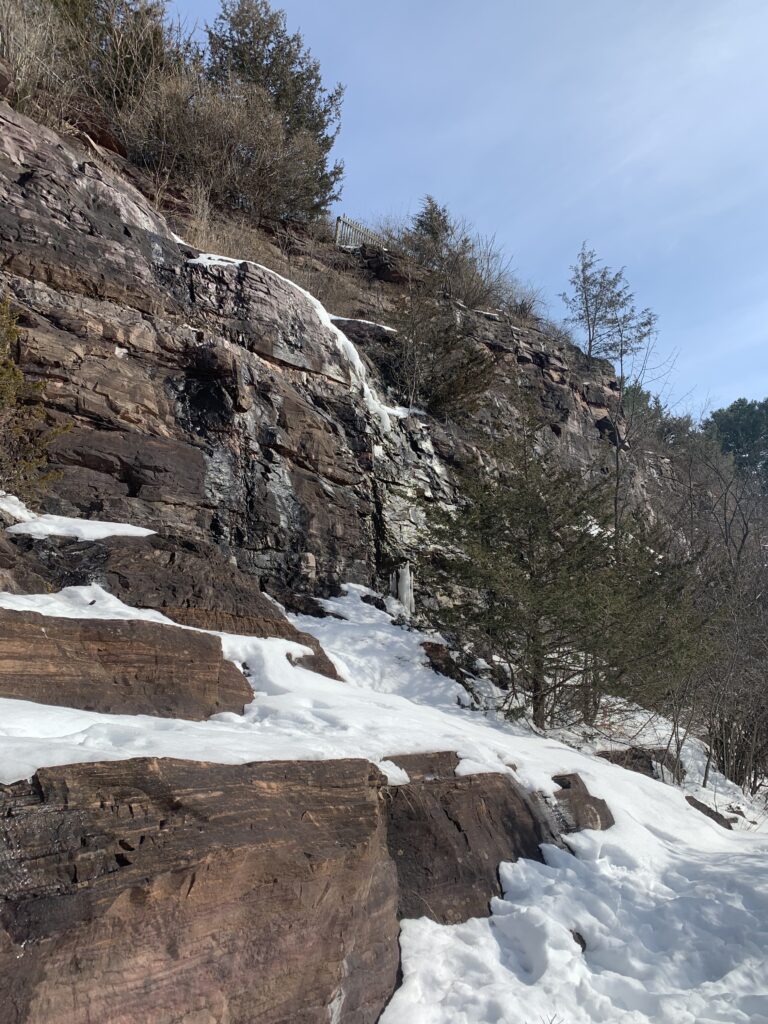
Signs of Snowshoe hare is one of the most prominent examples of wildlife evidence here at Redstone Quarry. The hares’ tracks have a clear walking pattern that makes following their trails easy to follow; it is never difficult to identify the direction in which they’re hopping. The Quarry is dense in undergrowth, a favorite habitat of the hare. None of these animals were visibly seen during my most recent trip to the Quarry on February 23,2020, primarily because of their nocturnal feeding habits (Saunders D.A. 1988) however many trails were identified as was what could have been a hare’s burrow. The burrow was a relatively shallow pit in the ground, underneath some undergrowth. There were some broken branches and light leaf litter as well, all clues pointing towards the fact that the small pit in the snow was created by a Snowshoe hare.


The Snowshoe Hare enjoys a woody plants diet in the winter time which would explain the broken branches near the assumed burrow, found in the undergrowth. The hare is usually asleep during the daytime and is most often spotted at dawn and dusk. It’s main predator, formerly, was the lynx and today the hare is a favorite for foxes, coyotes and several birds of prey (animalcorner).
On a regular basis during the month of February the Snowshoe hare interacts with many species of trees: Eastern Hemlock, Red Spruce and White Pine are the most common. In the summertime, they enjoy raspberries as well as birch and maple twigs. The hare’s interaction with the undergrowth is also significant: Partridge Berry bushes and Lowbush Blueberry bushes are some examples of underbrush in New England that is considered a popular habitat preference for hares (animalcorner).

Since my last visit to Redstone Quarry there have been few changes to the phenology of the landscape. In January the weather was much colder and the ponds at the Quarry were completely frozen over. During this visit, the ice cover was thin and the snow, melting. There were birds calling the entire time and a few chickadees, cardinals and robins were spotted; during my January visit, I heard few if any bird calls.

Citations:
ESF Office of Communications. (n.d.). Snowshoe Hare (Lepus americanus Erxleben) From: Saunders, D. A. 1988. Adirondack Mammals. State University of New York, College of Environmental Science and Forestry. 216pp. Retrieved from https://www.esf.edu/aec/adks/mammals/snowshoe_hare.htm
Snowshoe Hare – Facts, Diet & Habitat Information. (n.d.). Retrieved from https://animalcorner.org/animals/snowshoe-hare/
